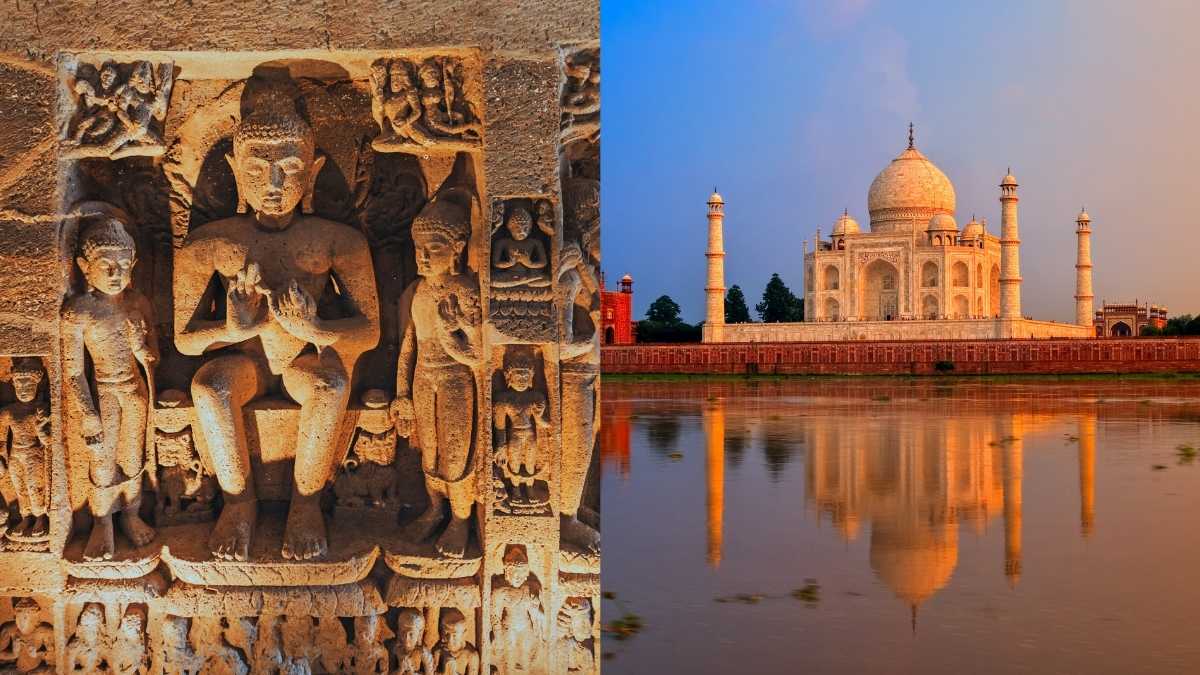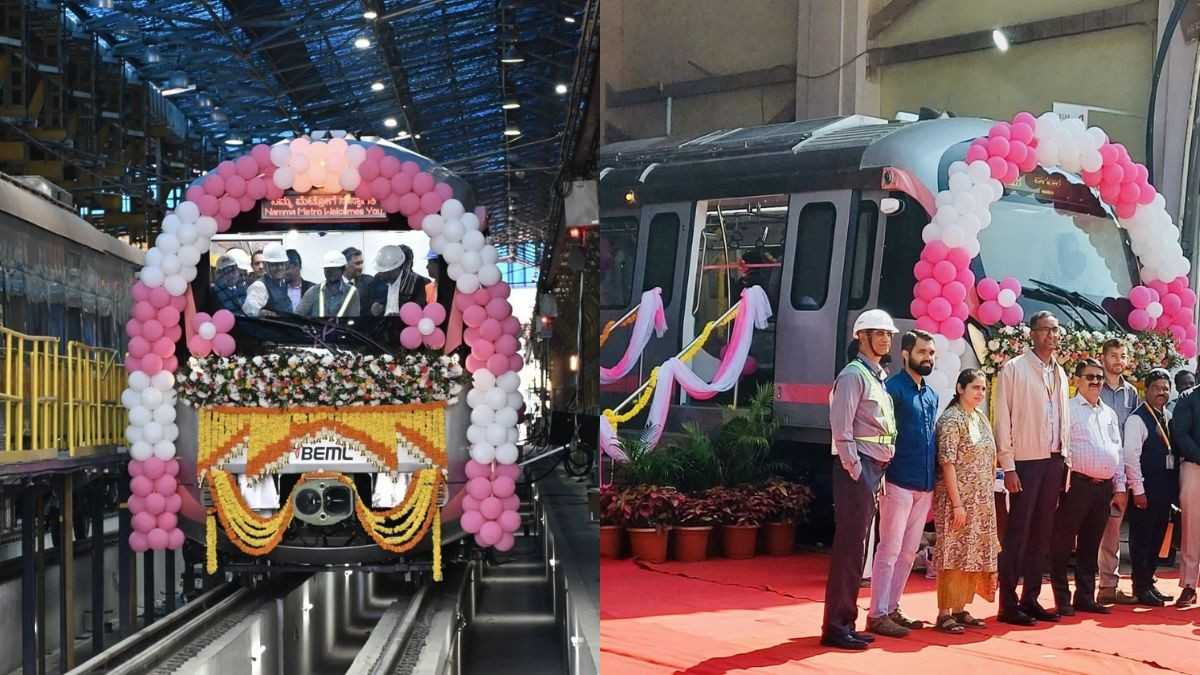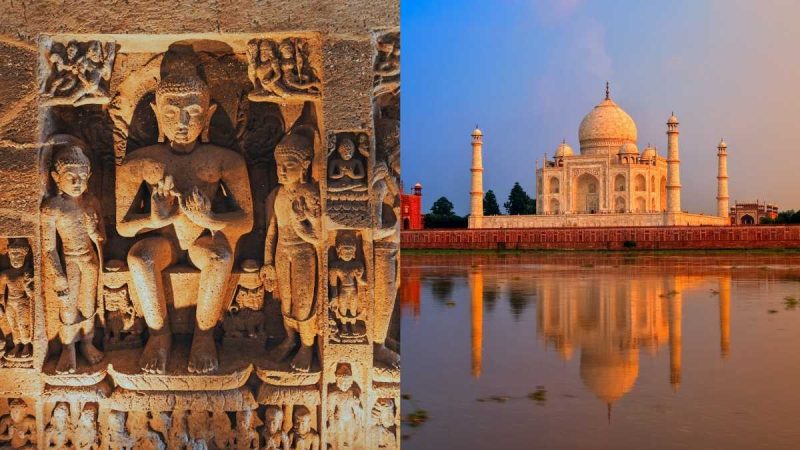Civilisations don’t announce their glory, they leave it in stone. India, layered with empires and faiths, still breathes through historical monuments older than entire modern nations. These structures don’t just “exist in history”; they witnessed it, shaped it, and in many cases, outlived the rulers who built them. From Mughal mausoleums to Buddhist caves carved in silence, here are ten pieces of India’s architectural memory, each older than half a millennium, each stubbornly alive despite time, war, weather, and tourism fatigue.
10 Historical Monuments In India Older Than 500 Years
1. Taj Mahal, Agra (1653)

Even if you’ve seen a thousand photographs, the Taj Mahal still surprises you in person. The symmetry feels almost unreal, especially to someone obsessed over every tile and inscription. Shah Jahan’s grief for Mumtaz Mahal was powerful enough to pull artisans from Persia, Central Asia, and across India, all working marble into lace and precious stones into flowers you want to touch but shouldn’t. The story is romantic, yes, but it’s also political architecture at its peak: a ruler insisting that his legacy must feel eternal. And somehow, it does.
2. Qutub Minar, Delhi (1192–14th century)
Out of all the historical monuments in India, the Qutub Minar doesn’t whisper history; it broadcasts it. It is a 73-metre sandstone tower that began under Qutb-ud-din Aibak and kept growing under successors. Look closely and you’ll notice the layers: some carving styles change, some inscriptions sit awkwardly over older ones, and the stone shifts colour as dynasties shift hands. It isn’t just a monument; it’s Delhi’s timeline carved into rock, chapter by chapter.
3. Red Fort, Delhi (1648)

You enter the Red Fort expecting silence, but there’s always an echo; it may be imagination or memory. This was once the centre of Mughal power, where polished marble halls blended seamlessly with water channels designed to cool emperors and impress envoys. Shah Jahan didn’t just build a fort; he built a statement, the kind that later colonisers claimed and independent India reclaimed. Every year on 15 August, when the Prime Minister speaks from its ramparts, the fort briefly remembers who it once was.
4. Hampi, Karnataka (14th century)
If ruins could dream, they would dream of Hampi. Boulder-covered hills cradle a lost Vijayanagara city where bazaars once lived and traders from Persia, Portugal, and Southeast Asia bartered under carved pavilions. The Virupaksha Temple still rings with prayers; the stone chariot sits stubborn and proud; even the broken pillars carry the suggestion of applause and festivals long gone. Out of all the historical monuments in India, Hampi is not melancholic, it’s defiant. It is a reminder that empires fall, but artistry endures.
Also Read: 10 Top Travel Destinations In India Worth Visiting This November
5. Ajanta Caves, Maharashtra (2nd century BCE – 5th century CE)
Walk into Ajanta and the world feels suddenly quieter, like you’ve intruded on someone’s meditation. Buddhist monks carved these prayer halls and monasteries by hand, guided by faith. The murals, astonishing even today, show royalty and commoners, joys and moral dilemmas, heavenly beings and everyday fatigue. Colours made from natural pigments still glow after almost two millennia. Imagine painting something today and someone admiring it in the year 4000; that’s Ajanta!
6. Konark Sun Temple, Odisha (1250 CE)

One of the most remarkable historical monuments in India, calling Konark a “temple” feels insufficient; it is a sculpture masquerading as architecture. Narasimhadeva I commissioned this chariot-shaped marvel for the Sun God, complete with massive horses, wheels, and bas-reliefs that move from divine scenes to ordinary village life without apology. Its iron-beam structure was once aligned perfectly to catch the first sun rays. This was precision engineering before “engineering” became a discipline. Even in ruin, it overwhelms you.
7. Sanchi Stupa, Madhya Pradesh (3rd century BCE, expanded 1st century CE)
The stupa commissioned by Ashoka feels like peace turned into geometry. It has no dramatic height, no excessive ornamentation, just a dome holding sacred relics and stone gateways telling quiet stories of Buddha’s journey. The carvings don’t show Buddha’s face; instead, they let symbols like a tree, a throne, a wheel do the storytelling. There’s power in restraint, and Sanchi proves it.
8. Golconda Fort, Telangana (13th–16th century)
Once a diamond-trade fortress (yes, the Koh-i-Noor and Hope Diamond passed through here), Golconda was the Qutb Shahi dynasty’s stronghold before Hyderabad rose around it. Stand at the entrance and clap, the sound travels up the hill to warn guards at the top. With acoustic engineering, rainwater harvesting systems and escape tunnels, this fort was built for survival and spectacle. Today its stones hold whispers of royal courts and military secrets.
9. Fatehpur Sikri, Uttar Pradesh (1571)

Akbar built a city for ideas, literally. Fatehpur Sikri wasn’t just a capital; it was a philosophical playground where scholars debated religion, politics, and ethics in royal courtyards. The red sandstone palaces glow at sunset, and the white marble dargah of Salim Chishti still sees prayers tied in hope. It’s a city that thrived briefly and then vanished from royal focus, proving that even ambition has seasons.
10. Khajuraho Temples, Madhya Pradesh (950–1050 CE)

Khajuraho’s reputation often begins and ends with “sculptures,” but the truth is richer. Sensuality here isn’t provocation, it’s more like philosophy. Human life, divine aspiration, music, war, and devotion – it’s all there, carved with such detail that even today architects study its engineering precision. Built by the Chandela dynasty, aligned astronomically, and preserved by isolation rather than luck, Khajuraho stands as a reminder that India once celebrated life in all forms without discomfort.
Also Read: One Of The Richest Temples In India Receives ₹900 Crore Donations In Just 11 Months!
These historical monuments in India do not merely survive, they confront you with scale, silence and proof that centuries before Europe’s Renaissance, India was sculpting, coding spirituality into stone, designing acoustics, engineering sunlight, debating ideas, and building dreams with hands and chisels. History isn’t past here, it’s present, patient, and carved deep enough to outlast us too.
Cover Image Courtesy: xantana/CanvaPro and andrey/CanvaPro
For more such snackable content, interesting discoveries and the latest updates on food, travel and experiences in your city, download the Curly Tales App. Download HERE. First Published: October 30, 2025 11:18 PM




